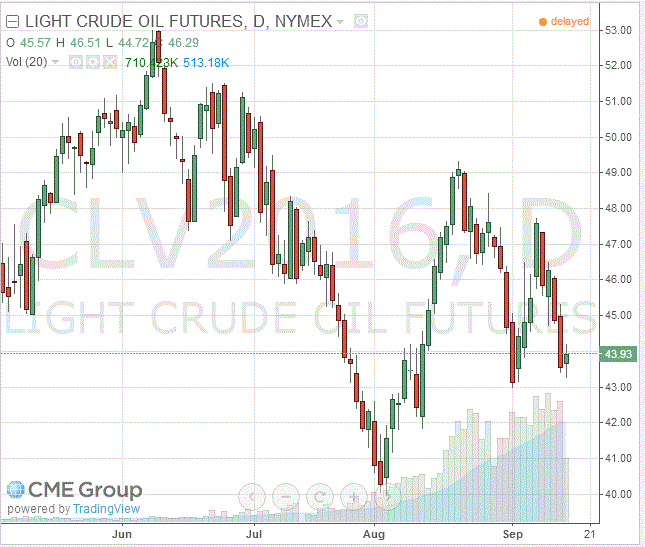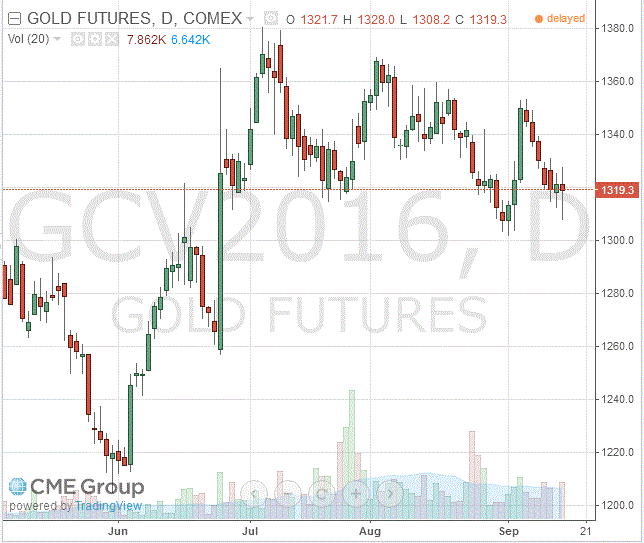Noticias del mercado
-
17:47
The price of oil rose slightly
Oil futures rose slightly, helped by the partial closure of short positions after the two-day drop. However, further price growth is limited by a stronger dollar and concerns about the resumption of crude oil deliveries from Nigeria and Libya.
Over the previous two sessions, the price of oil fell by about 6 percent, being under the pressure of the mixed data from the Ministry of Energy, as well as forecasts from the IEA and OPEC, which signaled the possibility of maintaining a global oversupply of oil next year.
Today, the US dollar index showing the US dollar against a basket of six major currencies, rose 0.1%. Since gold prices are tied to the dollar, a stronger dollar makes oil more expensive for holders of foreign currencies.
In addition, it became known that the State Oil Corporation of Libya has removed restrictions on the supply of oil from a number of ports, the total capacity of 300 thousand barrels per day. Meanwhile, Exxon Mobil and Royal Dutch Shell said that were ready to resume the supply of Nigerian grade Qua Iboe. According to estimates, Libya and Nigeria may return to the market about 800 thousand barrels per day, resulting in a tripling of the global oversupply.
"The absence of factors that could affect the oil market and lead to a significant increase in prices will lead to a range trange in $ 45-50 next 12 months", - says Goldman Sachs analyst Jeffrey Currie.
The cost of the October futures for US light crude oil WTI (Light Sweet Crude Oil) rose to 43.93 dollars per barrel on the New York Mercantile Exchange.
October futures price for North Sea petroleum mix of Brent rose to 46.60 dollars a barrel on the London Stock Exchange ICE Futures Europe.

-
17:28
Gold price trading lower
The price of gold fell sharply, reaching a two-week low move caused by the strengthening of the dollar, despite mixed US statistical data. However, soon the precious metal recovered almost all the lost ground against the background of partial profit taking.
The US Commerce Department reported that retail sales fell more than expected in August, amid weak purchases of cars and other goods, pointing to cooling domestic demand. According to the report, retail sales fell by 0.3 percent after a revised gain of 0.1 percent in July. Retail sales in July, as previously reported, were unchanged. Sales rose by 1.9 percent compared to the previous year. Excluding automobiles, gasoline, building materials and food services, retail sales were down 0.1 percent after falling 0.1 percent in July. It was expected that total sales will fall by 0.1 percent, while sales ain rise by 0.3 percent.
Overall, the latest data led market participants to revise their expectations concerning the tightening of monetary policy of the Fed in the short term. According to the futures market, the likelihood of tighter monetary policy of the Fed in September is 12% against 15% the previous day. Meanwhile, the probability of a hike at the December meeting is estimated at 51.2% compared to 52.9% yesterday.
ETF Securities analyst Martin Arnold said that the reluctance of the Fed to raise rates provides favorable conditions for gold, but even a small rate hike in December will lower the price of gold in the short term.
"The gold market on the defensive, remains under pressure, despite the clear and marked reduction of expectations of a Fed hike this month," the source said HSBC.
The cost of the October futures for gold on the COMEX fell to $ 1319.3 per ounce.

-
10:23
Oil is trading higher
This morning New York crude oil futures for WTI rose by 0.25% to $ 43.69 and Brent crude oil futures rose by 0.53% to $ 46.09 per barrel. Thus, the black gold is trading higher, recovering from a 3 percent drop in the previous session. This happened after the publication of data on US distillate stocks (+4.6 million barrels). The growth was the highest since January, distillate stocks reached a six-year seasonal peaks.
-
00:30
Commodities. Daily history for Sep 14’2016:
(raw materials / closing price /% change)
Oil 43.64 +0.14%
Gold 1,326.30 +0.02%
-